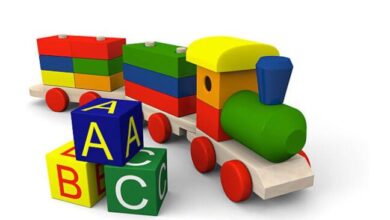5 Ways Teachers Can Use Generative AI to Their Advantage

Conversations about AI seem to be everywhere as the technology develops, and it’s often talked about in relation to education. Unfortunately, these conversations regularly revolve around students using AI unethically in their studies — the technology is often ignored when it comes to the positive impact it can have on education, particularly for teachers.
Whether you’re a seasoned educator, the headmaster of a school, or a student studying an online Ed.D. in K-12 Leadership, there are so many ways you can use generative AI to your advantage in your teaching or leadership role:
1. For run-of-the-mill communications
Teachers have enough to do when it comes to actually teaching and caring for their students, let alone making time for those essential, yet rather basic, communication tasks such as notices about assessments, emails outlining important dates, or permission slips and parent letters if you teach younger students.
Generative AI tools can save you time drafting these messages by allowing you to simply input the information you need communicated, alongside the style of communication (for example, is it a letter or an email? Who is it being addressed to?), and almost instantly preparing it for you. Even if you decide to tweak it a little, the whole process will be much quicker — writing out a few dot points and hitting ‘enter’ is far simpler than crafting a thoughtfully worded notice of any kind.
2. To brainstorm new ideas
Part of being a teacher is coming up with new and interesting ways for students to learn content they may view as unexciting.
Generative AI can help you come up with new scenarios for those wordy math problems, new concepts for games to help with revision, and new reading passages or writing prompts. The opportunities here are endless.
The creativity required of a teacher is significant in many ways, so take a little pressure off, or lean on the help when you’re feeling uninspired, and use AI to help with your brainstorming tasks.
3. Use AI as a personal assistant
It’s pretty widely understood that teachers are often underappreciated and under-resourced — there’s a lot to do and so little time to do it in. While a real-life human assistant might not be an option, a generative AI assistant is — use it to help you get through those day-to-day admin tasks that build up so quickly and easily.
Need to figure out a trend in the grades of your students? Give AI the information and it will give you the data.
Need to analyze the attendance rates of your class? AI can take that off your hands.
Need a quick answer to a question? Don’t scroll through search engine results finding the right site, have AI summarize it for you.
Need to come up with a schedule for your own deadlines or the different topics to cover in class? Let your AI assistant know what needs to get done and in what time frame and it will do the rest for you.
There are so many ways you can use generative AI as a personal assistant to help get the job done and boost productivity. It might not be able to chat with you over a cup of coffee in the morning, but it can do a lot of the more basic tasks a human assistant does in a day.
4. To generate copy for task instructions and lesson plans
Another text-based task, but this time a little more specific to the actual job of teaching. As an educator, you know what you need to teach, and you know how, but you also need to have these things written down for students.
Writing out task instructions can be a tedious part of the job — sometimes you just want to get to the actual teaching. You can input a task description into your chosen generative AI platform, and it will produce a well-written set of instructions tailored to your class’s age group or comprehension levels.
Similarly, you can do this for lesson plans. Let your AI platform know exactly what your plan is, and let it fill in all the ‘fluff’ and formatting.
5. Generate visual content
Some students are visual learners, but if the resources available to you aren’t quite right, and you’re not much of a graphic designer or artist, visual generative AI tools can be a huge help.
You can ask for graphics and charts visually representing data or other content, or you can have a little more fun and generate different pictures to accompany student work or handouts — making dry work feel a little more engaging.
There are some things to keep in mind when using AI in a teaching role, particularly ethical considerations such as ensuring you don’t input personal student information, or take the personal touch out of things like assessment feedback. But when AI is used carefully and skilfully, it can be a valuable tool inside and outside the classroom.





